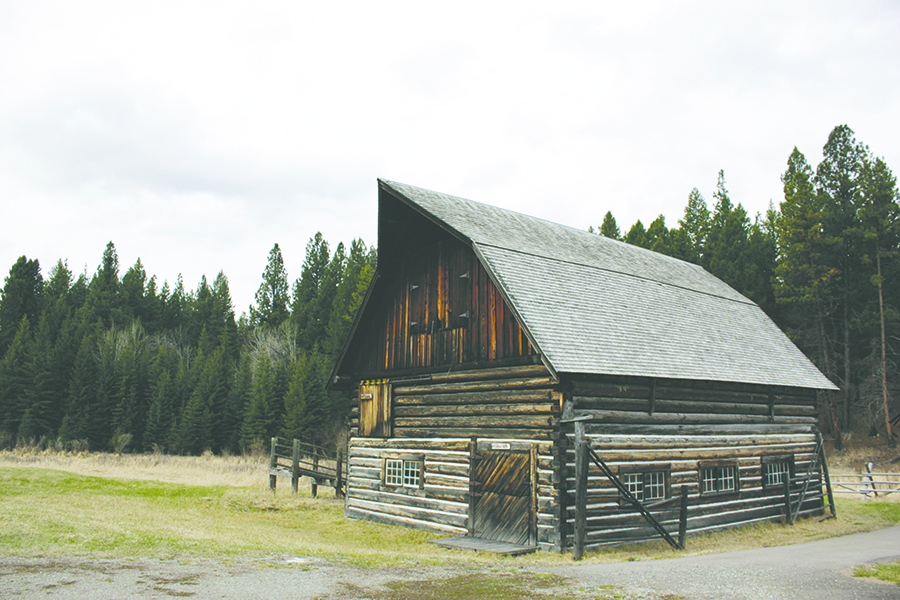Just south of Fortine, you’ll find the Ant Flat Ranger Station.
Initially, the site was part of the Lewis and Clark Forest Reserve, one of the oldest reserves in America. It was established in 1897 in honor of the Lewis and Clark Expedition that passed through the area between 1804 and 1806.
However, even though presidential proclamations established the reserve, little was known about the area. For most American settlers, it was a vast, unmapped wilderness that had been largely unexplored since the Lewis and Clark Expedition.
In 1902, President Theodore Roosevelt commissioned his friend, fellow hunter, and fellow Rough Rider Fred Herrig to find an ideal location for a ranger station. At the site that is now known as “Ant Flat,” Herring found a vast meadow and a good source of water and decided to settle and establish the station in the same area where it is today.
Herrig had made many preparations for his scouting trip. Roosevelt gave his saddle to Herrig for the journey (the saddle can be seen at the Miracle of America Museum in Polson). And along with his black horse and Russian wolfhound, Herrig also brought along many provisions – including lilac bushes.
It seems Herrig had intended to plant the lilac bushes and name the station “Lilac Hall.” And while the original buildings that Herrig and his crew had built are long gone, there are still lilac bushes on the property.
However, despite Herrig’s lilac-laden intentions, his friend and crewmember Byron Henning noticed all the “gol-durned ant hills in the meadow” and mockingly advocated that the name “Ant Flat” was far more appropriate. The name stuck. And Herrig became the first ranger of the Ant Flat Ranger Station.
Herring and his crew established the ranger station at a time when “Fortine” was little more than a settlement. The post office named in honor of early settler Octave Fortin was not established until 1905 (land records from 1892 bear the name Octave Fortin – without the “e” at the end). And the bustling logging operations and clamor at the Fortine depot did not get underway until about 1906.
Even then, the area was sparse. Joseph Gussenhoven, who established logging operations near the Ant Flat Ranger Station, reported in 1907 that despite his success and the Great Northern taking the entire output of his sawmill, he “has great trouble keeping his mills in operation through the scarcity of labor.”
And while Ant Flat Ranger Station offered access to the railroad and Brimstone Creek, it also offered relative isolation and other hardships that Herrig and his crew overcame. They persevered and established the ranger station, which operated from 1902 until 1963.
The original buildings on the site are gone and were burned to make way for the “newer” buildings that stand today.
The green garage and mechanic’s shop was built in 1932. The “white house” with a gambrel roof was built in 1922. Originally, it served as a warehouse, but was later converted into a ranger’s office.
The log-built barn that still stands on the property was begun in 1921 and completed in 1925. And taking a careful and respectful look around the barn, you’ll notice that some of the iron and steel hardware appears to be hand-forged.
Today, the station is part of the Kootenai National Forest and an historic site, nature trail and environmental education center. Visiting the site and walking the Ant Flat Nature Trail is good for enjoying nature – and just as good for getting lost back in time.
Jaix Chaix is a columnist and author of Flathead Valley Landmarks and other local history books that are available for sale at the Flathead Beacon at 17 Main St. in Kalispell.
